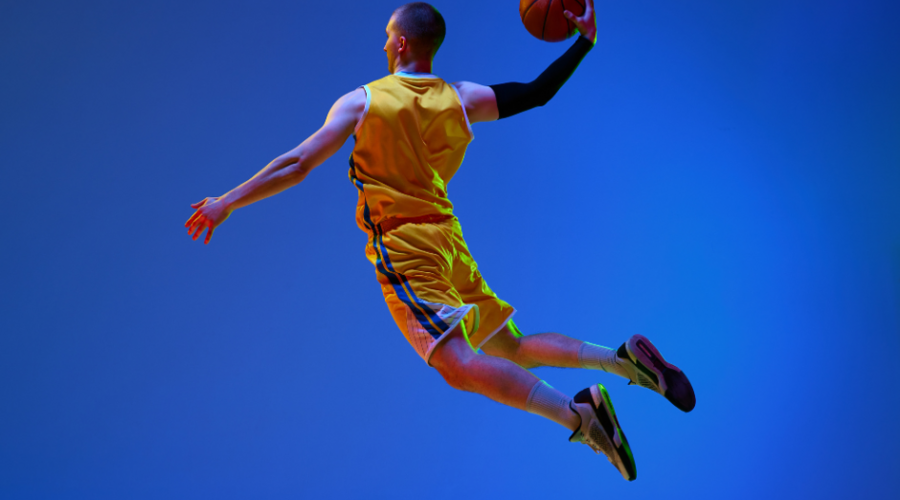Build Strength: The Power Behind Your Jump

Want to Jump Higher? Start with Stronger Legs
If you want to get off the ground like a rocket, forget fancy tricks for a second—your legs do the heavy lifting. Quads, hamstrings, glutes, calves—they’re your launch pad. The stronger they are, the higher you go. Simple.
Yet, plenty of athletes obsess over technique while ignoring raw strength. Big mistake. You can have perfect form, but if your legs can’t generate enough force, you’re not going anywhere.
Build Power: The Must-Do Strength Exercises
If you’re serious about jumping higher, stop wasting time with fluff exercises. Focus on the big lifts that hit multiple muscles at once.
- Squats (Barbell or Dumbbell) – Go deep. Full range means full power.
- Deadlifts – Drive through your heels, fire up your hamstrings, and feel your lower back engage.
- Walking Lunges – Balance, control, and raw leg strength in one move.
- Bulgarian Split Squats – Brutal, but necessary. One leg at a time, fixing imbalances and adding explosiveness.
Check your progress weekly. Add weight as you get stronger. And don’t rush it—building strength is a process. Form comes first. Injuries kill progress.
Explosive Power: Turn Strength into Jump Height
Being strong isn’t enough. You need speed—your muscles have to react instantly. That’s where plyometric training comes in. Think of it as turning your legs into loaded springs.
Start with basics:
- Box Jumps – Jump high, land soft. Power and control in one move.
- Depth Jumps – Step off a box, hit the floor, explode up. Zero hesitation.
- Broad Jumps – Go for distance. Force, momentum, coordination—all in play.
- Bounding – Sprint with exaggerated jumps, switching legs mid-air.
Do this 2–3 times a week. And for the love of your knees, land properly. Bad mechanics wipe out all the gains and send you straight to rehab.
Core Strength: The Hidden Key to a Higher Jump
Legs generate power. But your core? That’s what keeps everything under control. If it’s weak, energy leaks—force that should send you skyward gets wasted.
So train it like you mean it:
- Planks – Basic? Yes. Effective? Also yes. Front, side, and moving planks build real stability.
- Hanging Leg Raises – Strengthens your lower abs and hip flexors—key for takeoff.
- Russian Twists – Better balance, better coordination, stronger midsection.
- Medicine Ball Slams – Explosive core work that translates directly to power on the court or field.
Stronger core = smoother movement, more control, and no wasted energy.
Flexibility: The Jump Secret Nobody Talks About
Tight muscles kill your jump height. If your hips, hamstrings, or calves can’t fully extend, you’re leaving inches on the table. Worse? You’re one awkward landing away from an injury.
Simple fix:
- Dynamic hip stretches before training = better range of motion.
- Hamstring stretches mean deeper squats, stronger jumps.
- Calf work improves foot mechanics (no stiff landings).
- Yoga once or twice a week keeps everything fluid.
Even 10 minutes of stretching a day can unlock extra power in your jump.
Eat and Drink Like an Athlete
You can train all you want, but if your body’s running on garbage fuel, don’t expect results. Muscle needs protein. Energy comes from carbs. Hydration keeps everything working.
- Protein – Chicken, fish, eggs, plant-based options. Your muscles need to rebuild.
- Complex Carbs – Oats, quinoa, sweet potatoes. Skip the sugar crashes.
- Healthy Fats – Avocados, nuts, olive oil. Good for hormones, joints, and overall recovery.
- Water – At least 2–3 liters daily. Dehydrated muscles = slow, weak jumps.
Eat clean. Stay consistent. The results will show.
Recovery: The Real Growth Happens Here
Training breaks you down. Rest builds you back stronger. Ignore recovery, and you’ll hit a plateau—or worse, burn out.
- Sleep – 7–9 hours. Non-negotiable.
- Rest Days – At least one full day off per week. Your body needs it.
- Foam Rolling – Keeps muscles loose, improves circulation, reduces soreness.
- Active Recovery – Light movement (walking, swimming) keeps blood flowing without stress.
Recovery isn’t optional. Treat it like part of your training.
This isn’t magic. It’s just smart training. Get stronger, move faster, stay mobile, fuel up, and rest right. Stick with it, and you’ll see the difference—on the court, field, or anywhere else you need to jump out of the gym.
Related Articles:

Aiming High: Enhancing Shooting Accuracy with Targeted Focus in Basketball
One of the most fundamental yet often overlooked aspects of improving shooting accuracy is the concept of keeping your eyes on the target. This article delves into the essence of this technique and how it can transform your gameplay.


